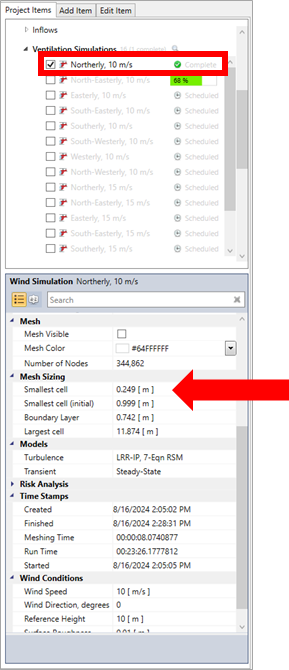Running Ventilations with RSTM
Use of the Reynolds Stress Transport Model (RSTM) adds 7 additional turbulence equations to be solved for ventilation cases. The additional equations can be seen in the Simulation Monitor, as shown in Figure 5 below.

Tutorial 10 - Figure 05 - Simulation monitor showing the 7 additional turbulence equations being solved
In the Project Items Tab, clicking the checkbox next to the name of the ventilation will display the domain for the selected case. Notice the domain sizing is much taller than with the previous ventilation cases using the SST model. This is to ensure that the vertical fluctuating velocity is properly accounted for in the calculation.

Tutorial 10 - Figure 06 - in:Flux window showing taller domain sizing for ventilations with the RSTM
The mesh refinement around the CAD model will automatically be increased for simulations using the RSTM. Below shows the top view and side view of the completed mesh for the Northerly, 10m/s case.

Tutorial 10 - Figure 07 - Completed mesh for the helideck turbulence analysis
As more equations are being solved, the ventilation simulation will take on average twice as much time to complete when compared to regular ventilations with the SST model.
When a simulation has finished, the smallest cell size can be found in the properties panel. This metric is occasionally requested from clients when performing helideck turbulence studies.

Tutorial 10 - Figure 08 - information available about the mesh upon completion of the simulation
Let each of the 16 ventilation cases finish calculating before continuing. Alternatively, a file with the completed simulations is included in the tutorial zip file referenced on the first page of Tutorial 10.